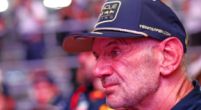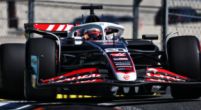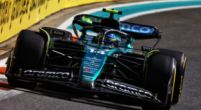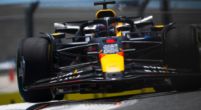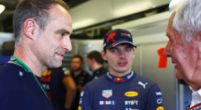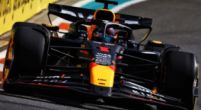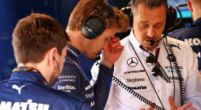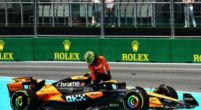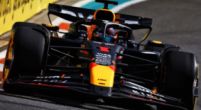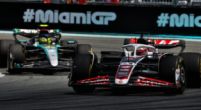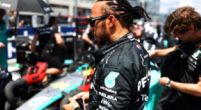Tech

F1 tech analysis | Why Verstappen was less dominant in the United States
Red Bull and Max Verstappen won both titles in the previous two races. Still, the United States Grand Prix proved Red Bull will continue to push hard. Despite some more question marks than normal, this year’s usual script occurred, with Verstappen winning both the sprint and Grand Prix. Hamilton was able to chase down Verstappen but couldn't win.
However, this wasn't the main talking point from this weekend. Lewis Hamilton and Charles Leclerc were disqualified for “technical reasons”, meaning they lost their P2 and P6 spots, respectively. But what was the real technical reason why both drivers were disqualified? Let’s try to dive deep into it here below.
Red Bull less dominant on Sunday
We're used to seeing Red Bull dominating during the races in 2023 because the RB19 is able to manage the tyres beautifully. This is exactly what happened during Saturday’s sprint, with Max Verstappen, who managed to open a 9.5-second gap to Hamilton in P2, always lapping in the 1.39s. However, the situation changed on Sunday, when the cooler air temperatures caused less tyre degradation, meaning the drivers could push for longer.
This fact reduced the gap inflicted by Max Verstappen to their competitors; moreover, the Dutch driver confirmed in the post race interview: “The whole race, I was struggling a lot with the brakes. Around here, there are quite a few braking points. I couldn't really have the same feeling as yesterday, so that definitely made my race a bit tougher out here today. It was very close at the end, and also with the backmarkers, the tyres are already going, so it makes it more difficult."
From a technical point of view, Red Bull decided to raise the car after Friday’s FP1: the Circuit of the Americas is very bumpy and disjointed and, despite the need for the RB19 to run as close to the ground as possible to generate a lot of downforce from the floor, the Milton Keynes team decided to increase the ride height and use a maximum downforce rear wing already seen in Qatar.

This choice made the car less dominant in the fast and flowing first sector but very good in the last, resulting in a more balanced performance across the field and an open battle for pole on Friday. However, the car's ability to babysit the tyres didn’t disappear, as the World Champion managed to win both races. For sure, the team acted in time to change the car’s height to avoid damaging the plank too much, as happened to Mercedes and Ferrari, who got disqualified.
Why were Hamilton and Leclerc not compliant with the FIA rules?
Since COTA has been added to the calendar, many fans love not only the atmosphere but especially the track itself. The Texas circuit has a variety of different corners: a high-speed first sector, two very long straights and a very twisty section in sector 3. However, this track has always been known for being quite bumpy. This means that these ground-effect cars need to run at a higher ride height to not damage the plank under the floor and to not create the well-known porpoising effect.
The single hour practice section caused a lot of problems for all the teams: while Red Bull and McLaren decided to raise the car a little bit (losing some performance), Mercedes were confident with the data coming from the new floor, and Ferrari reduced their ride height, to produce more downforce from the Venturi inlets and gain some precious performance. The effects of all these changes were soon visible, with both teams flying in qualifying and Mercedes and Hamilton who almost got the edge over Verstappen on Sunday.
Despite the great show, the FIA revealed that 2 of the 4 cars analysed (Leclerc, Hamilton, Verstappen and Norris) reported a “a physical floor and a plank wear inspection” and a specific area on both cars were “found to be not in compliance with Article 3.5.9 e.” But what’s this article about?
The article in F1’s 2023 technical regulations reads: “The thickness of the plank assembly measured normal to the lower surface must be 10 mm ± 0.2mm and must be uniform when new. A minimum thickness of 9mm will be accepted due to wear, and conformity to this provision will be checked at the peripheries of the designated holes.” This means that all the cars on the grid must not wear their plank by more than a millimetre per race (a new plank is installed before the race) prior to disqualification. This is exactly what happened to Leclerc and Hamilton in Austin: as the image below shows, the SF-23 and the W14 had a very low ride height compared to the RB19, which caused more sparks and contacts with the asphalt, resulting in higher plank consumption.


However, as the FIA delegate pointed out in his report, this has been the effect of the combination of a bumpy track like Austin and Formula 1 decision to make the Sprint race around here, which minimised the time available for all the teams to test their cars in different ride height configurations. What happened after the race should be a warning for both FIA and F1 to change this format to give teams more time to change the setup and find the right balance, since after FP1 parc fermè condition begins.
In conclusion, this weekend was full of excitement and fun, not only for all the fans but also from a technical point of view. Many teams introduced upgrades, and the plank situation affected the race's final results. The hope is to see some more exciting races in the coming weeks and fewer technical problems of this kind.
GPBlog is now on WhatsApp. Click here to subscribe to our GPBlog WhatsApp channel now!








